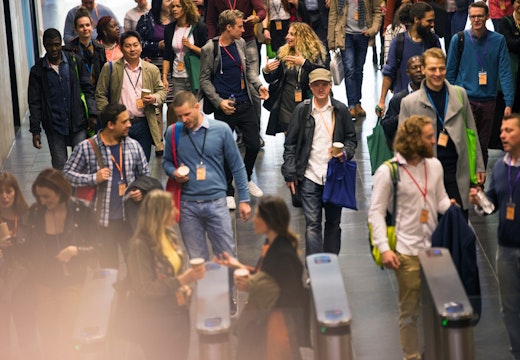Change up: five ‘musts’ for negotiating workplace change
From wellbeing and engagement to smart infrastructure, workplace transformation is consuming organisational strategy – how can companies stay abreast of change and create more resilient strategies for the future?
The speed to which companies have had to adopt to new employee expectations, such as the flexibility to work wherever and whenever they want, has brought organisation’s attention to the need to be adaptable to changes in the workplace ecosystem. Adaptability is no longer a nice-to-have – it’s a necessity if companies want to keep pace with new ways of working. Companies now have the opportunity to continually iterate their workspaces to ensure that they continue to offer safe, supportive, and appealing environments to their employees.
Here are five ‘musts’ that companies should keep in mind as they negotiate periods of transition.
1: Workplaces must promote employee engagement and holistic wellbeing
The simple idea behind the office of the future is this: happy, comfortable employees do more productive work, making the maximisation of happiness and comfort a first-order goal of office placemaking. But because happiness and comfort are hard to define, companies will increasingly rely on standards and credentials to validate the extent to which their offices are people-centric, and to quantify just how good those offices make the people working in them feel.
The Atlanta-based International WELL Building Institute (IWBI) manages the WELL certification, the global standard for human-centric spaces, which will continue to play a significant role in ensuring employee wellbeing. The certification outlines benchmarks relating to the provision of light, clean water, and clean air, and considers elements such as relaxation spaces that promote mental and emotional health.
2: Workplaces must employ smart building technology
The Internet of Things (IoT) continues to penetrate the world of work. Forbes predicted in 2023 as many as 43 billion devices would be connected to the internet and these numbers are only set to increase as more time passes.
At the office, connected devices now often serve as components of systems within integrated platforms that control office environments to make them as inhabitant-friendly as possible. As they do so, these sensor-equipped devices collect data and beam it back to AI-powered analytical applications, which building managers can use to for insight in how to run things better.
One way to think of a smart building platform is as a collection of verticals: a ventilation system vertical, a window system vertical, a heating system vertical, a lighting system vertical. But in a well-designed smart building platform, these verticals don’t function in isolation: they share data and can trigger one another based on sensed conditions or combinations of factors. Taken as a whole, a well-designed smart building functions like a responsive machine – a machine for which data serves as both lubricant and fuel, and which human managers can control from an integrated dashboard accessible on a tablet or other such device.
When it comes to what such a smart system can do, the sky’s the limit. To give just one example, embedded sensor technology can keep track of temperatures in various areas of an office building as the sun tracks across the sky. As it receives that temperature information, the window system can respond accordingly, closing or opening blinds as necessary. At the same time, the lighting system can respond to what it’s ‘hearing’ from the data, dimming office light levels when the amount of available daylight crosses a certain threshold. Likewise, the heating system can lower its output, keeping a windowed space from getting too warm and saving on energy costs.
3: Workplaces must be flexible and adaptable
The pandemic forced many companies and their employees to work from home. One powerful result of that shift was the acceptance of the idea that the office doesn’t necessarily have to be a defined and static place. Instead, the ‘office’ can exist as a psychic space wherever workers possess reliable technologies to connect them with co-workers, supervisors, customers, clients, and others.
‘Office-as-a-service’ is the phrase that describes this new model. When the office is no longer thought of as a static location, it becomes something malleable that companies can better shape to employees’ needs. Workspaces can move beyond the open plan office to feature multiple zones: for individual work, for relaxation, for meetings big or small. Technology can make these spaces fluid and adjustable by modifying its lighting regime and layout, or a relaxation area becomes a great place for a team brainstorming session. Such layout changes will be easier to do when furniture and other equipment is ingeniously modular.
4: Workplaces must incorporate nature
It would be hard to find an environment more divorced from the natural world than the traditional office. However, over the last few years designers have recognised the folly of divorcing employees from nature for a significant percentage of their waking lives. As a result the ‘biophilic’ office has become standard, with companies integrating natural elements into their office design in order to improve the wellbeing of both individual workers and the company as a whole.
Terraces, accessible rooftops, façades and walls that allow comfortable levels of light to penetrate as well as indoor and outdoor gardens: these are some of the things that the biophilic office can offer employees. With solar power, rainwater harvesting, and other renewable resources, such workplaces generate less air and water pollution. Ventilation systems eliminate dust (and perhaps even viral matter) from the air. And these spaces are aesthetically appealing, therefore providing an emotional benefit to its users.
5: Workplaces must promote deep inclusion and personalisation
The world has come a long way in making its spaces viable for the disabled, the elderly, and others with accessibility issues. But offices must continue this progress, as providing access becomes integral to planning. We’ll see innovations across the workplace design arena which cater to a wider range of individual needs.
IoT tech will play a role in this, allowing employees to individualise conditions from workstation to workstation, depending on what their needs or wants. The workstations of those with weaker vision might require more intense light; so might those of people with perfect vision whose work requires precision work with small parts.
Across the workplace, human-centric lighting will make conditions better for everyone, creating a baseline of comfort. Lighting that supports human functioning will become the standard. Smart lighting systems might deliver appropriate doses of wakefulness-making blue light during the morning, then transition into a more calming spectrum in the afternoon.








